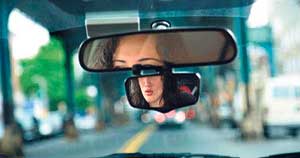
Insensitive?A team of researchers at the Technical University of Berlin announced a couple of weeks ago that they have developed technology which enables cars to read their driver's minds. These mind-reading automobiles are expected to hit the roads in about five years. But why would anyone pay for a car – and three fold in taxes in Sri Lanka – that can read their minds?
Well, the researchers have found that they could improve reaction times of drivers in real driving conditions by monitoring their brains and reducing distractions during periods of high brain activity. So they coupled their brain activity monitors with a "smart" dashboard that reduces the amount of information displayed to drivers during stressful periods, which were able to speed up driver's reactions by as much as 100 milliseconds. Hundred milliseconds or one tenth of a second may not seem as much, but it is enough to reduce braking distance by nearly 3 metres in a car that is travelling at 100 kilometres per hour. Apart from the ingenuity of this invention which is quite apparent, it also marks a tentative first baby-step of development in brain-interface technology which may pave unimaginable new avenues for user-interface design in the future. For a start, a personal computer that can automatically change its interface according to their user's mood and needs will not be too far away. The point is; machines in their brief co-existence with their human creators, have always been insensitive to the less tangible dynamic forces that govern their users, such as emotions and physical fatigue. Traditionally, the objective of designing a user-friendly machine or interface has been too narrowly defined.
Intelligent and user-friendly machines of the future will naturally have to be sensitive to its environment and the changing and intangible needs of users.Write into technopage@gmail.com and tell us what you think. Improve your computer literacy Intelligent Exposure In digital camera terminology, Intelligent Exposure is a function of the camera that helps to avoid blown highlights and blocked shadows by suppressing the extreme brightness and darkness in the picture. This function works by partially controlling the ISO sensitivity to increase the exposure of only the darkened area when there is backlighting or insufficient flash lighting to capture the scene as viewed by the photographer through the camera. Intelligent Exposure is a function found in many Panasonic brand digital cameras. On Nikon brand of digital cameras, the similar function is called D Lighting. |
|
||||||
|| Front
Page | News | Editorial | Columns | Sports | Plus | Financial
Times | International | Mirror | TV
Times | Funday
Times || |
| |
Reproduction of articles permitted when used without any alterations to contents and the source. |
© Copyright
2008 | Wijeya
Newspapers Ltd.Colombo. Sri Lanka. All Rights Reserved. |

